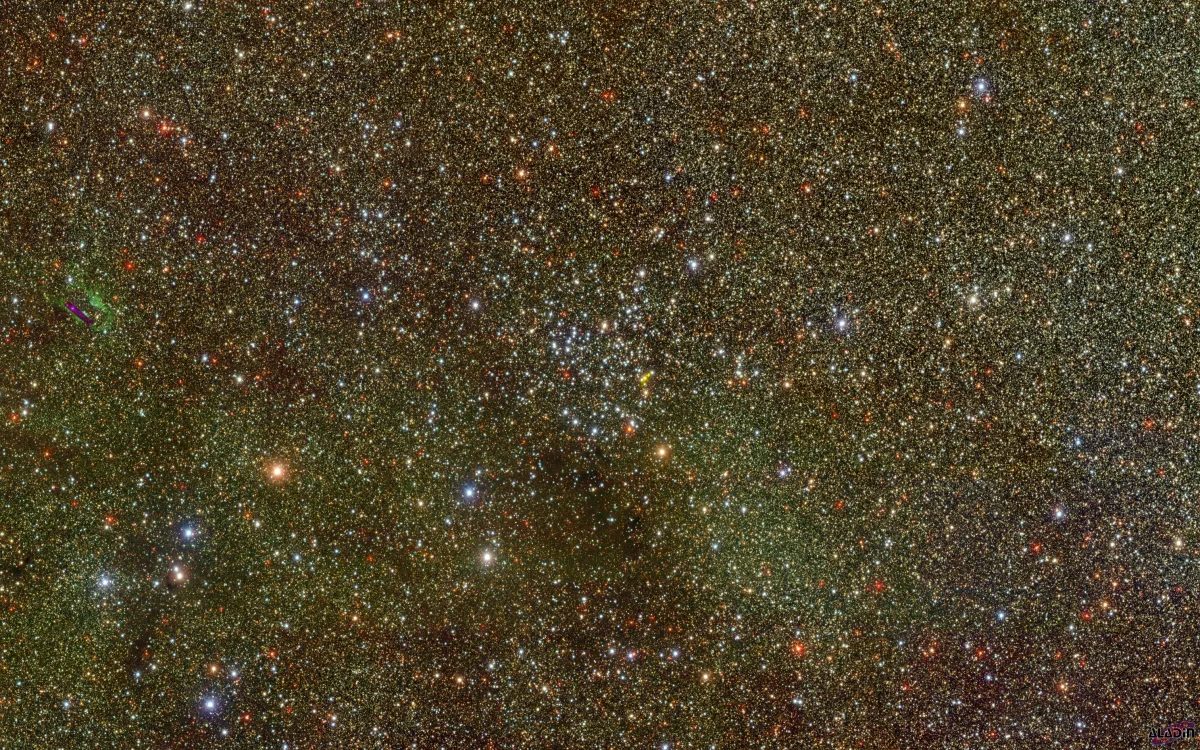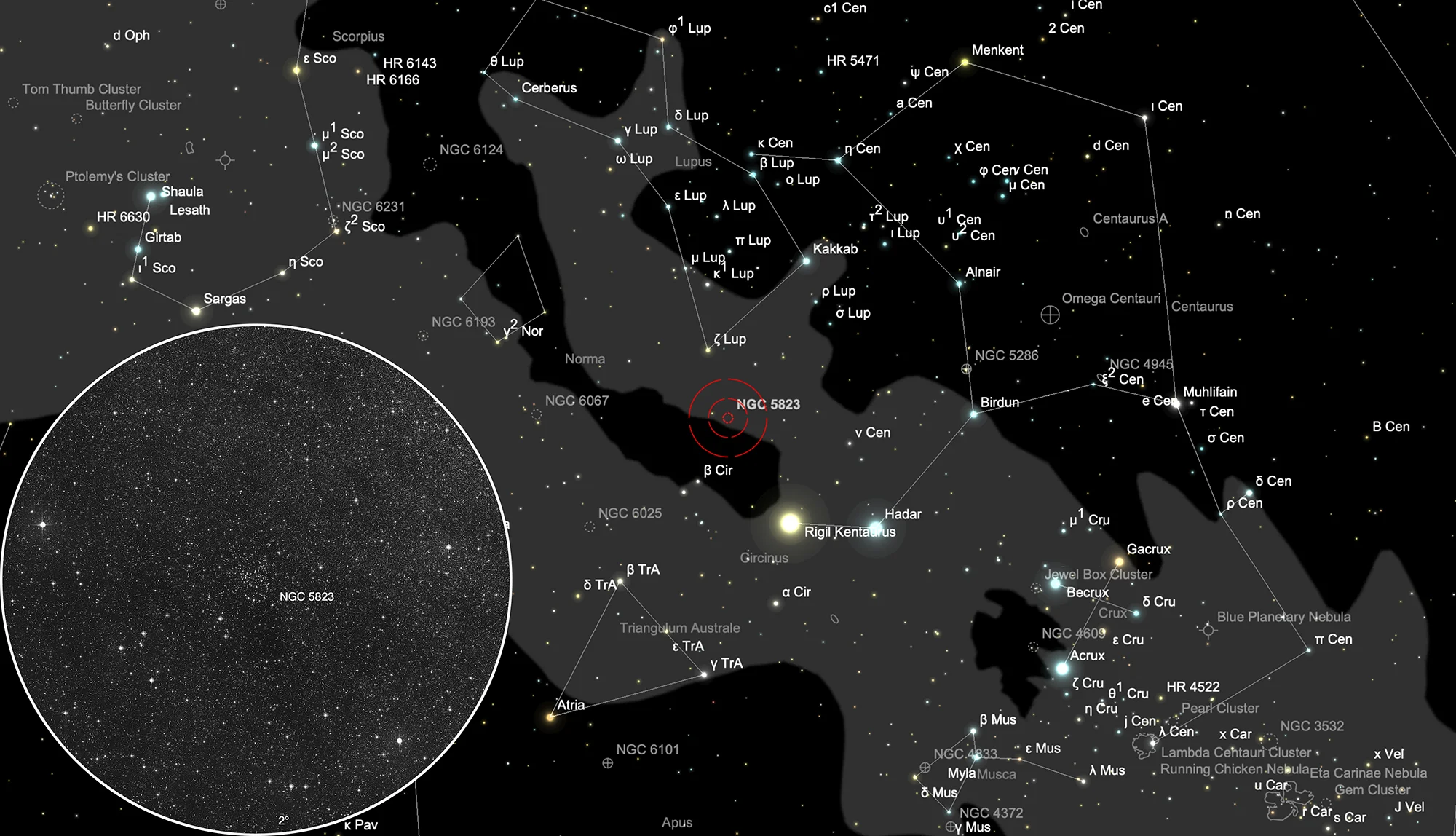Open Cluster NGC 5823

History
This cluster was discovered by James Dunlop on 8 May 1826 while observing with his 9-inch speculum reflector from Parramatta, NSW. He listed it as Δ 351. The summary description based on two observation reads: «A pretty large cluster of small stars resembling faint nebula, general figure round, south preceding 2 Pysidis.» [50]
John Herschel, unaware of Dunlop's discovery, listed this cluster as h 3589 and observed it once in April 1836 (sweep 694) from South Africa and noted: «Cluster VII. class; a fine large cluster of separate stars 13...14 mag, 10' diameter; not much compressed in the middle; nearly fills the field» [11]
Physical Properties
| Designation | NGC 5823 |
| Type | OCL (III2m) |
| Right Ascension (J2000.0) | 15h 05m 30.5s |
| Declination (J2000.0) | -55° 36' 13" |
| Diameter | 12 arcmin |
| Visual magnitude | 7.9 mag |
| Metric Distance | 1.192 kpc |
| Dreyer Description | Cl, cL, Ri, lCM, st 13…14 |
| Identification, Remarks | h 3589; GC 4032; OCL 936; ESO 176-SC11 |
Finder Chart
The open cluster NGC 5823 is located in the constellation Circinus. Unfortunately it is not visible from Europe. On 10 May it in opposition with the Sun and is therefore highest in the sky at local midnight.
